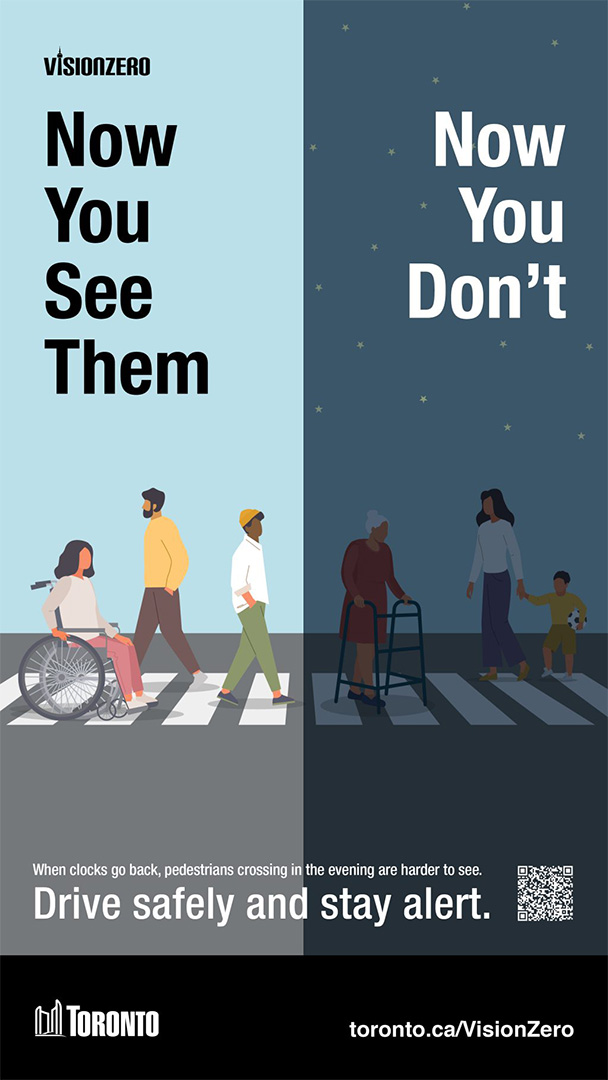As the days get shorter and the clocks fall back, traffic incidents involving pedestrians “increase by more than 30 percent during the evening commute hours,” according to the City of Toronto‘s marketing material for the VisionZero campaign. It’s clear that when visibility is reduced anything on the road, including people, is more difficult to see.
The City asks drivers to slow down and stay alert, as well as ensure vehicle headlights are functioning properly. They also suggest drivers obey speed limits and approach crosswalks and intersections with caution.
Conflicts between pedestrians and drivers at crosswalks can result in collisions, congestion, and road rage incidents that can culminate into a negative experience for everyone. This is even more pronounced on campus.
When it first opened in 1967, Durham College was home to 250 students. By 1987, the campus population grew to more than 2,700 students. By the 2000s, enrolment grew to more than 7,000 students. As of 2024, Durham College is home to 15,000 students. As the student population continues to grow, traffic volumes will increase.
As the student population continues to grow rapidly, so too do the number of cars on campus. Despite more parking being added over time, as the campus was expanded and sidewalks widened to accommodate more foot traffic, its roads have remained the same width. This means that the likelihood of conflict with pedestrians – made worse by daylight savings time – increases.
However, pedestrians have the right of way at dedicated crosswalks – and drivers must to yield to them. This is a rule not only in Ontario – but across Canada too. The only exception is when a peace or traffic enforcement officer says otherwise. Since there aren’t any officers on campus, pedestrians aren’t breaking any rules.
There’s another problem too. Pedestrians are often crossing campus roads with their heads buried in their phones – not paying attention to their surroundings, even when it’s dark. This is very dangerous because they are at a higher risk of being hit, not to mention they tend to be walking at a slower pace than drivers on the road.
The intersection of Founders and Commencement Drives has hundreds of pedestrians and cars passing through every hour due to its centrality and proximity to the bus loop and parking lots. As such, drivers may be stopped for several minutes at stop signs while a continuous stream of unyielding pedestrians cross the road – resulting in congestion and frustration among drivers. This is made more difficult when it is hard to see.
Drivers stopping where they aren’t supposed to increases congestion. Drivers pulling off to the side to drop off or pick someone up is a regular occurrence due to the lack of a dedicated kiss-and-ride. This results in unnecessary congestion and drivers going around other vehicles, which can result in collisions with other vehicles or pedestrians, especially during daylight savings.
To reduce conflict, and potential collisions, the college needs to look into ways to reduce congestions and increase visibility. This could include controlled pedestrian crossing lights or traffic lights and more overhead lights. The easiest solution is that drivers and pedestrians both need to be more vigilant.




